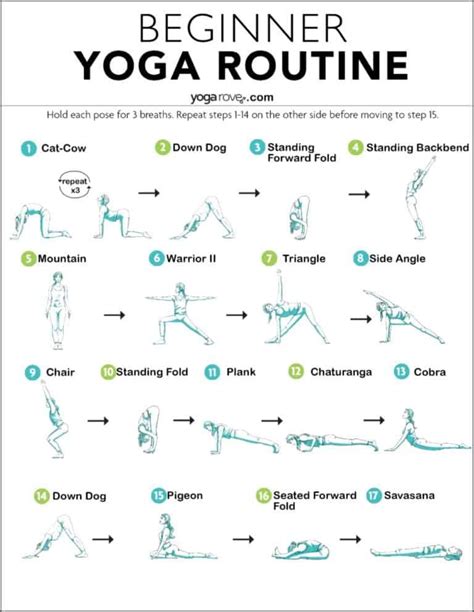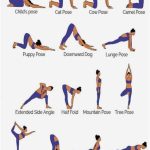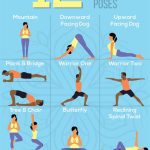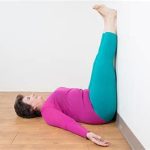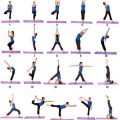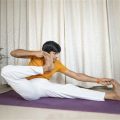Mastering Your First Week of Yoga: 7-Day Beginner’s Plan for Flexibility and Inner Peace
Yoga is more than just physical exercise; it is a comprehensive discipline designed to harmonize the mind, body, and soul. Whether you’re seeking to improve flexibility, reduce stress, or simply cultivate a healthier lifestyle, this 7-day yoga plan for beginners is your gateway into the world of yoga. This guide will take you through each day’s practice, highlight key yoga poses, and offer practical tips to ensure your journey starts smoothly. With consistency and mindfulness, you will find improvements not just in your body but also in your mental clarity and emotional well-being.
Key Concepts of Yoga
Yoga, originating from ancient India, is a holistic practice that connects the body, breath, and mind. While there are many forms of yoga, this beginner-friendly plan focuses on Hatha Yoga due to its emphasis on foundational poses and breathing techniques. In this practice, you’ll learn key concepts that will set the groundwork for more advanced techniques in the future:
- Asana: The physical postures used to improve strength and flexibility.
- Pranayama: Breathing exercises that help manage energy flow and calm the nervous system.
- Mindfulness: The act of staying present in each moment, observing both physical sensations and mental states without judgment.
- Alignment: A fundamental principle to ensure each pose is executed with maximum efficiency and minimum injury risk.
Day-by-Day Breakdown of Your Yoga Practice
Day 1: Introduction to Basic Poses
Focus: Foundation and Awareness
Your first day of yoga focuses on familiarizing yourself with foundational poses and becoming aware of your breath and body. Begin with a short meditation or breathing practice to center yourself. Below are the poses for Day 1:
| Pose | Description | Benefits |
|---|---|---|
| Mountain Pose (Tadasana) | A simple standing pose that encourages stability and posture awareness. | Improves posture, strengthens legs, and builds focus. |
| Child’s Pose (Balasana) | A resting pose that stretches the hips, thighs, and spine. | Calms the brain, relieves stress, and stretches lower back. |
| Downward Dog (Adho Mukha Svanasana) | An inverted V-shaped pose that strengthens the arms and stretches the hamstrings. | Elongates the spine, strengthens arms, and stretches legs. |
Day 2: Flexibility and Stretching
Focus: Increasing Flexibility
On Day 2, the emphasis is on poses that improve flexibility and lengthen tight muscles. Flexibility is a key component of yoga and a frequent challenge for beginners. These poses are gentle but effective at working on your flexibility.
| Pose | Description | Benefits |
|---|---|---|
| Forward Fold (Uttanasana) | A standing pose that deeply stretches the hamstrings and spine. | Stretches hamstrings, reduces fatigue, and relieves stress. |
| Cobra Pose (Bhujangasana) | A gentle backbend that opens the chest and strengthens the back. | Increases spine flexibility and stretches the chest and shoulders. |
| Low Lunge (Anjaneyasana) | A deep lunge that stretches the hip flexors and strengthens the legs. | Stretches hips, groin, and thighs while improving balance. |
Day 3: Building Strength
Focus: Strengthening Core and Arms
Strength is an essential element of yoga, helping to stabilize your body and protect against injury. On Day 3, you will focus on building core and arm strength.
| Pose | Description | Benefits |
|---|---|---|
| Plank Pose (Phalakasana) | A core-strengthening pose that also engages the arms and shoulders. | Strengthens core, arms, and improves posture. |
| Warrior II (Virabhadrasana II) | A standing pose that strengthens the legs and stretches the hips. | Improves strength in legs and opens the hips and shoulders. |
| Bridge Pose (Setu Bandhasana) | A backbend that strengthens the glutes, lower back, and hamstrings. | Strengthens back, legs, and stretches chest and shoulders. |
Day 4: Balance and Focus
Focus: Enhancing Stability and Concentration
Day 4 focuses on poses that improve your balance and concentration, which are vital for deeper yoga practices. By working on balance, you also engage your core muscles, contributing to overall strength and stability.
| Pose | Description | Benefits |
|---|---|---|
| Tree Pose (Vrksasana) | A standing balance pose that builds focus and strengthens the legs. | Improves balance, strengthens legs, and increases focus. |
| Eagle Pose (Garudasana) | A challenging balance pose that stretches the shoulders and hips. | Improves balance and flexibility in the hips and shoulders. |
| Half Moon Pose (Ardha Chandrasana) | A lateral balance pose that stretches and strengthens the legs and core. | Enhances stability, strengthens legs, and opens the chest. |
Day 5: Mindfulness and Meditation
Focus: Mental Clarity and Stress Relief
Yoga is as much about the mind as it is the body. Day 5 introduces more mindfulness and meditation practices to help you connect with your inner self. The poses are slow and gentle, allowing you to focus on your breath and presence in the moment.
Day 6: Full-Body Flow
Focus: Integration of All Elements
On Day 6, you’ll move through a full-body flow that integrates the poses, strength, and mindfulness learned throughout the week. It’s a perfect way to bring together all the principles of yoga—strength, flexibility, balance, and mindfulness—into one cohesive practice.
Day 7: Restorative Yoga
Focus: Recovery and Relaxation
As your first week of yoga comes to a close, it’s important to rest and restore your body. Restorative yoga uses gentle poses and props to help the body relax and recover. This is a slower-paced practice with long holds, allowing for deep relaxation and healing.
Current State of Yoga and Its Practical Applications
In today’s fast-paced world, yoga has evolved into a global phenomenon with millions of practitioners worldwide. Its benefits extend far beyond physical health, playing a critical role in mental well-being, stress management, and personal growth. Yoga has been adapted into various forms—ranging from power yoga for fitness enthusiasts to restorative yoga for those seeking healing.
Stakeholder Analysis
Yoga impacts a wide range of stakeholders, from individual practitioners to global wellness organizations. Understanding their roles and interests is key to appreciating how yoga’s practice has developed and its future trajectory:

